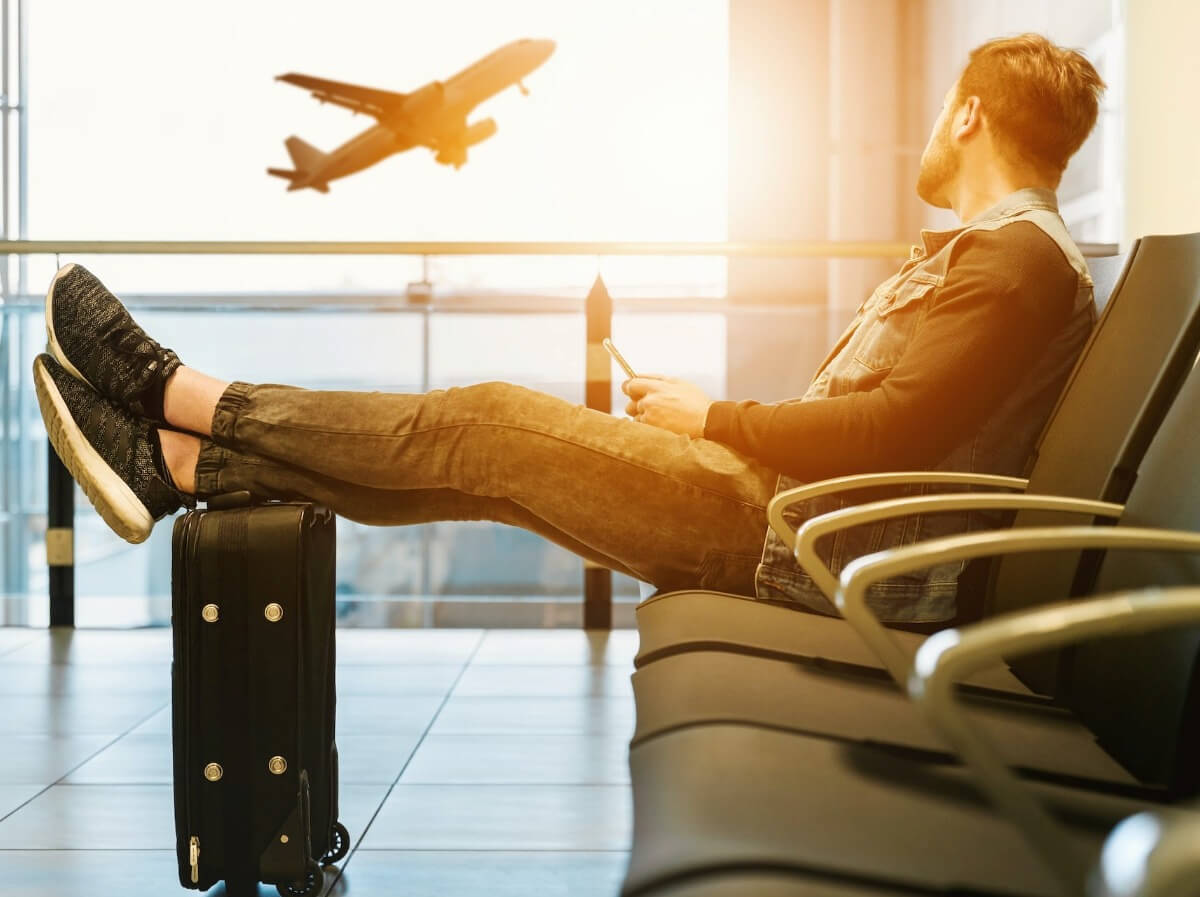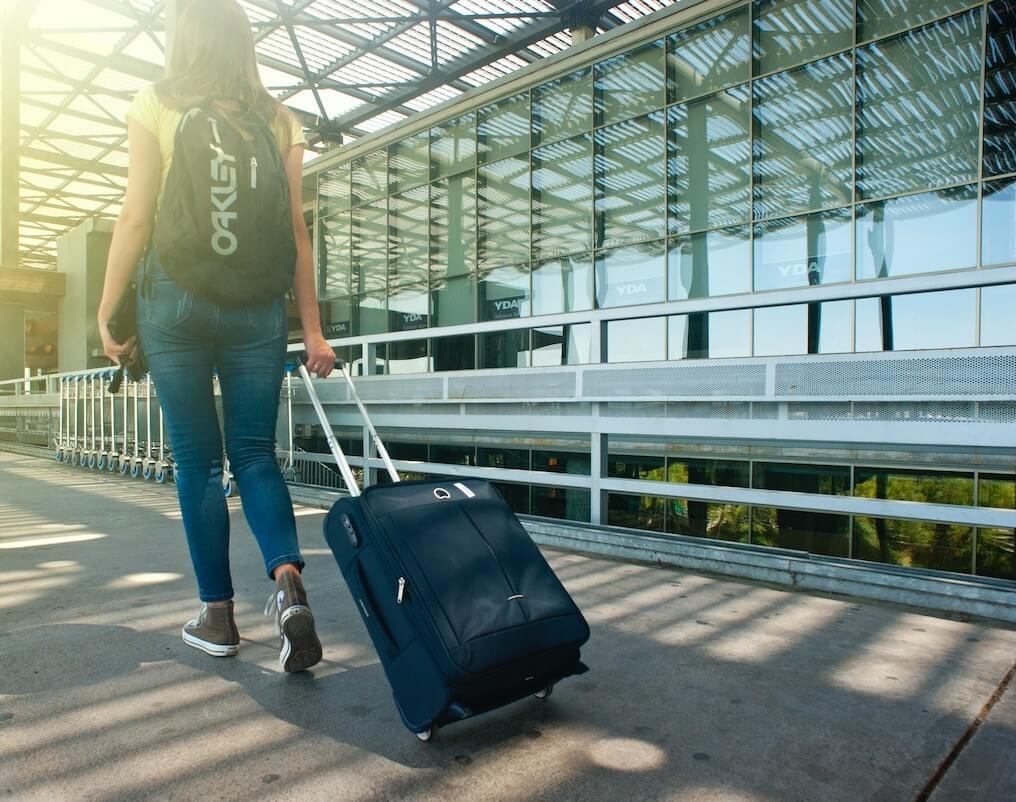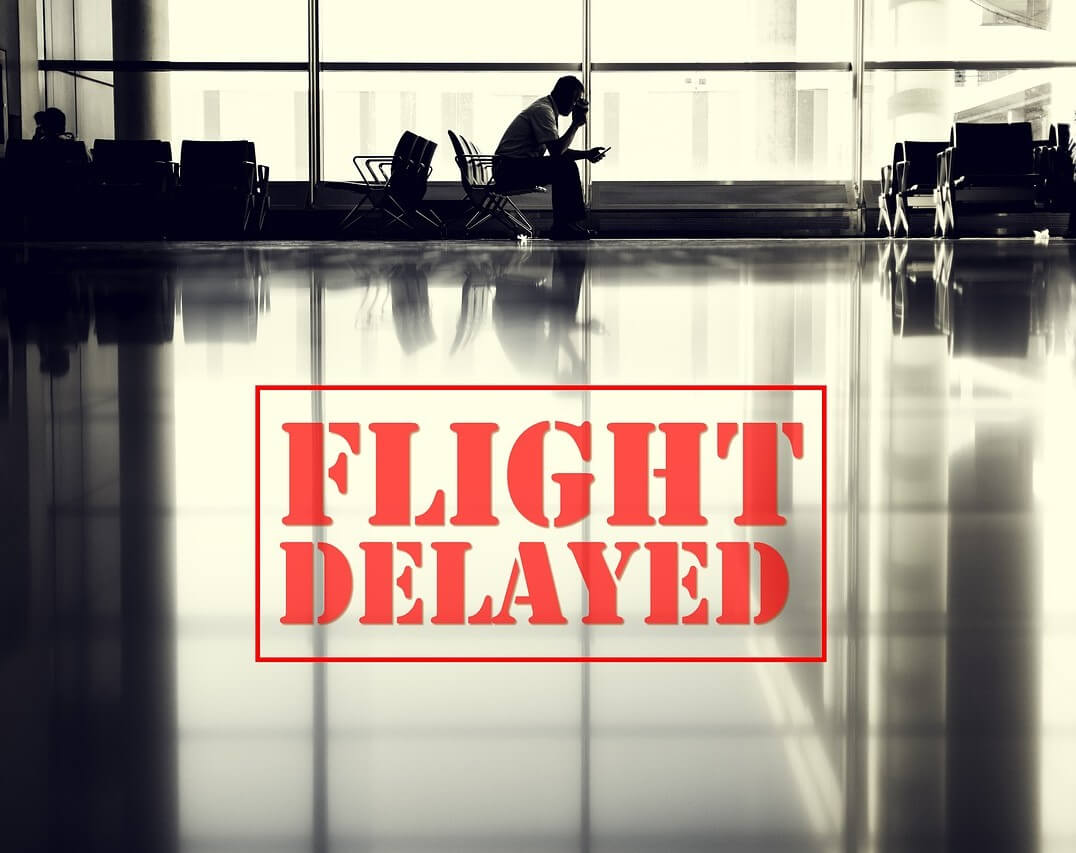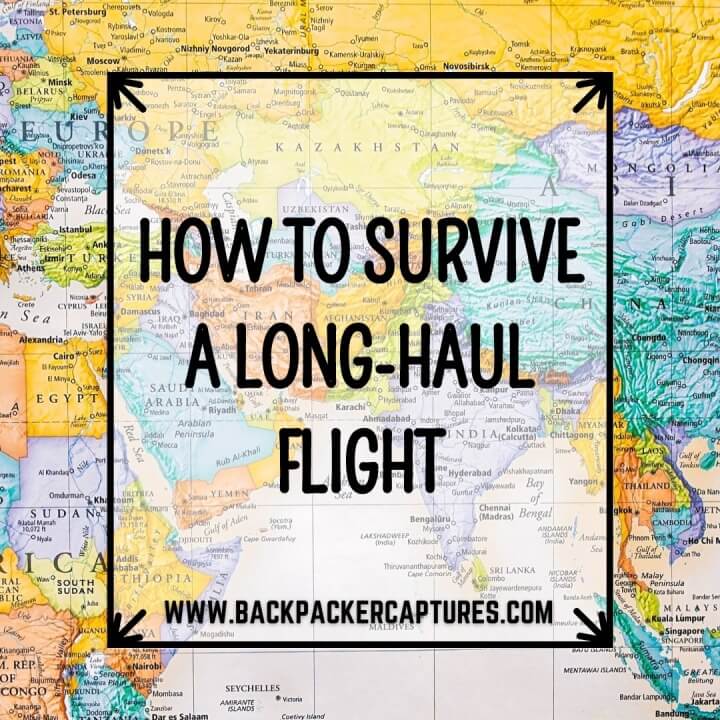10 BEST Tips for a Smoother
Airport Experience
10 BEST Tips for a Smoother
Airport Experience


Ahh Airports, sometimes they’re the most exciting places in the world, but other times, they can become a painstakingly stressful nightmare. That’s why I’ve created these tips, in order to help make sure you experience and view the airport as the most exciting place in the world!
Below you’ll find the ten very best tips for making sure your airport experience is as smooth and as straightforward as possible.
#10 Utilise Long Flight Connections/Layovers

You did it, you finally managed to bag yourself a super cheap long-haul flight, but now you’re wondering how on earth you’re gonna survive 16 hours in Singapore airport. Well, there’s a simple solution, take yourself out of the airport! This is something that a huge proportion of travellers have totally no idea about. As long as you meet the country’s entry and visa requirements, you can actually leave the airport and head off into the city during your flight layover.
This is a technique I’ve personally used dozens of times, sometimes I’ll even purposely book long layovers, just for the fact that I’ll get the opportunity to explore the connecting city for a few hours. As long as your connecting flight is all under one booking, you won’t even have to collect your checked luggage, so it’s just your hand luggage that you’ll need to take with you. Of course, the best time to explore a city is during daylight hours, so if you’re intentionally looking at flights with long layovers, I’d strongly recommend booking one with a convenient daytime layover.
Obviously, this method is only useful if you have a long layover (Ideally 6+ hours), as it’s extremely important that you’re back at the airport in plenty of time to catch your connecting flight. You’ll need to reenter the airport and pass back through security and immigration, so be sure to keep this in mind when planning out your timings. After all, you don’t want to end up missing your connecting flight do you!
#9 Be Prepared for the Chance of Delays

The best course of action when it comes to dealing with airports and flights, is to be prepared for the unexpected. We all hate delays, but sometimes they end up being unavoidable. That’s why it’s best to go into your journey with an open mind, and not put too much pressure on everything panning out perfectly. Be sure to carry some extra cash with you too, just in case you end up needing to buy a few additional meals or drinks at the airport.
It’s also always important to remember, your flight delay probably isn’t the fault of the person working at the gate, so there’s no use in getting angry or agitated with people at the airport. Also, if you’re flying on a multi leg journey under one single booking, it’s your airline’s responsibility to make sure you arrive at your final destination, even if you miss your connecting flight due to delays. On the other hand, if you’ve made a separate booking for the second leg of your journey, it’s always best to leave yourself some wiggle room with timings, just in case your first flight ends up being delayed.
#8 Try to Avoid International US Transits

Now this is something that’s a personal pet peeve of mine. Practically every country on the planet, deals with international flight transits/connections as follows. You deboard your first flight, you head into the departure lounge, you look for your new gate, and you wait for your next flight to start boarding, pretty simple right? That’s not the case in the United States though, they super conveniently decided that if you’re getting a connecting international flight, even within an hour or two of your first flight landing, you’ll still need to fully pass through US immigration. This means you’ll have to wait in long immigration lines, whilst also needing to pass through another round of security checks.
This one just doesn’t add up to me, it seems like such a waste of time and resources. You’re literally about to get on another flight to a different country, with no intention of ever stepping foot on American soil. So why on earth do you need to fully enter the US, just to leave moments later?! This also means passengers need to meet the entry and visa requirements for the US, which for many, involves applying for an online ESTA. This is something that often catches travellers off guard, as many aren’t aware that they need to obtain a valid ESTA, even if their journey only involves a flight transit in the US.
As you can probably tell, I’m not a big fan of US transits haha. Therefore, I’d strongly recommend you avoid unnecessary transits through the US! Unless of course it’s the only option you have, or if it’s gonna save you a lot of money, and I mean a LOT of money!
#7 Familiarise Yourself with the Layout of Your Connecting Airport

There’s nothing worse than having to frantically scramble to your gate after hearing your final boarding call. That’s why it’s important to familiarise yourself with the layout of your connecting airport. If you have a tight connection/transit to make, I’d suggest researching the airport layout before boarding the first leg of your journey. Take a look at which airlines you’re flying with and what part of the airport they usually operate in, this will help establish how far you need to travel within the airport complex. Depending on the size of the airport, you may even be required to change to an entirely different terminal. Again, this is something that can be researched in advance to help prepare yourself for a smooth transition between flights.
Even if you don’t have a tight connection in the airport, it’s still best to familiarise yourself with the location of your next departure gate. Some airports around the world are huge, meaning there can be extremely long walks between gates. Realising your gate is a 30 minute walk away, after hearing that your plane has commenced boarding, definitely isn’t ideal. That’s why it’s a good idea to be in the vicinity of your departure gate before browsing the many shops and eateries on offer in the terminal. (Don’t deny it, we all love a bit of airport shopping!)
#6 Assess How Early You Need to Arrive

Arriving early to the airport has been standard advice since the dawn of air travel, but exactly how early should we be turning up to the airport? Well, it isn’t exactly a straight forward answer, there’s a number of factors you’ll need to consider. Are you checking in any hold luggage, have you already checked in online, is this an airport you’ve travelled from before, how far away from the airport are you, what time of day is your flight scheduled for, is your flight international or just internal.
All of these variables will affect how early you need to arrive at the airport. But as a general rule of thumb, if you have a long-haul international flight with baggage to check in, then I’d recommend arriving at the airport three hours before departure. Alternatively, if you’ve checked in online and are only travelling with hand luggage on a short-haul or internal flight, then you shouldn’t need to arrive much earlier than one and a half hours before your departure. Just do some research on your specific airport, as their official websites will have plenty of info relating to their security and queuing times. I personally find it’s the check in/bag drop lines that tend to cause the most delays at airports. (Come on airlines, sort it out!)
#5 Research Minimum Connection Times

I’ve already touched on flight connections, but this is another important tip to consider when organising your multileg flight journey. Airports all over the world set out guidance for the minimum time it takes for passengers to transit from one flight to another inside their specific complex. This is further complicated by airlines deciding to issue their own minimum connection times for specific airports.
I’d recommend looking at what the airport itself states though, as this is a better estimate compared to an airline that’s looking for additional revenue. It’s important to remember, if you do book your flight under one booking (See Tip #3), and you miss your connection through no fault of your own, then the responsibility lies with your airline, and they’ll need to put you on the next available flight. But this isn’t always ideal, as it can mean you’ll be spending many hours in the airport, or even worse, an entire overnight stay! Therefore, it’s always best to avoid a flight connection that doesn’t look realistic and is touching on the official airport’s minimum connection time. We all wanna get to our destination quick, but we don’t want to risk missing our second flight! So be sure to always find yourself a flight connection that looks sensible and practical.
#4 Check in Online

Checking in online can help save you a heap of time at the airport, especially if you don’t have any bags to check into the aircraft hold. Even if you do have luggage that you need to drop off, it’s still beneficial to check in online, as sometimes airlines will operate a separate queue inside the terminal, purely for customers who’ve already checked in and are merely dropping off luggage.
You should also be aware that a number of budget carriers have now started charging an extra fee for customers to check in at the airport (Ryanair I’m looking at you!). So be careful not to get caught out with this one, by ensuring you always check in online before turning up to the airport.
Another additional benefit of checking in online, is you’ll often be able to select your plane seat for free (Come on, we all hate paying for seat selection!). Be sure to find out when online check in opens for your specific airline, as they can greatly vary from 30 days to 24 hours before departure.
#3 Avoid Buying Separate Connecting Tickets

Sometimes, purchasing separate tickets as part of a multileg journey can save travellers a bit of money, but often this can end up being way more hassle than it’s worth. This causes a number of logistical issues in comparison to flying under one single booking. In most cases, flying under one booking will mean you don’t have to pass through any immigration in your connecting country, and that your checked luggage will automatically be transferred onto your next flight.
If you choose to fly on separate tickets, you’ll effectively need to pass through your connecting country’s immigration, collect your luggage, recheck your luggage onto your next flight and then once again pass through security and immigration. This means you’ll need to allow a lot more time for your flight connection (I’d recommend a minimum of four hours), as you’ll need to wait in a number of long lines during your connection (Arrival immigration, baggage collection, check in/bag drop, airport security and departure immigration).
You’ll also need to make sure you satisfy the entry and visa requirements for your connecting country, as you’ll legally be entering the country, as opposed to simply transiting inside the airport terminal. This may result in you incurring extra costs for visas and entry/exit fees, so definitely make sure you do your research into the specific country’s requirements for your individual circumstances.
Additionally, if you fly on separate bookings and your first flight ends up getting delayed, causing you to miss your second flight, you won’t be entitled to any form of compensation, as your bookings are totally independent from one another. On the other hand, if you’re flying on one single booking and a delay causes you to miss your connecting flight, your airline will still ensure you reach your final destination by putting you onto an alternative flight.
It isn’t always possible to follow this advice though, as booking two separate tickets may be your only option for flying between two specific locations, i.e. it’s not possible to complete your journey through one individual flight booking. In this case, just be mindful that you’re leaving yourself an ample amount of time to complete your transit, and that you’re also able to fully satisfy the entry requirements for your connecting country.
#2 Be Prepared for Airport Security

Airport security is often the most annoying part of many traveller’s airport experience, but it doesn’t have to be that way! As long as you get yourself prepared beforehand, you’ll be able to sail through security in a matter of no time. It’s important to remember the standard rules and regulations that relate to flying onboard a commercial aircraft. No metal is permitted through the detectors, so try to avoid wearing a belt, or just take it off in advance and pop it inside your carryon. The same goes for watches, jewellery and any other metal items you may be carrying on your person.
Over recent years, liquids have also become an important part of airport security. Passengers are only permitted to carry liquids in their cabin baggage under a certain set of rules. The liquids must be stored in containers that are no larger than 100ml and placed into a clear, sealed, plastic bag, inside each passenger’s personal hand luggage. Large electrical items such as laptops and cameras are also often required to be removed from bags and placed into separate security trays for additional screening.
Just be mindful of what you’re carrying on your person and inside your hand luggage during your day of departure. That way you can easily shift things around and remove certain items whilst you’re still waiting in the security line. Making is super easy for you to quickly pass through the security checkpoint upon arrival. After all, that means you’ve got more time to enjoy that crisp, cold, airport beer! (It always tastes so much better in the airport right?!)
#1 Check Visa and Entry Requirements

The number one tip for ensuring a smooth and straightforward airport experience, is to always thoroughly check the visa and entry requirements for your destination (Potentially your transit location too). This has to be one of the number one reasons why passengers fall victim to unnecessary airport stress.
It’s essential to have your visa and entry documents ready for your destination’s immigration checkpoint, but it’s also important to have these documents ready at your departure airport. Airlines may ask to see all of the required documents before allowing you to board your flight. This is because airlines are responsible for flying travellers back out of a country if they’re denied entry at the border, hence why they don’t want to fly anyone out that doesn’t already meet their destination’s requirements.
You’ll also need to ensure you’re well aware of your destination’s onward travel rules, I’d highly recommend you have a good read through my Ultimate Guide to Onward Travel Requirements. This is another issue that has often caught out a large number of unsuspecting travellers. Don’t worry, as long as you do the necessary research for your specific destination’s entry requirements, you won’t have anything to worry about when your travel day finally comes around.
I hope these useful tips and tricks have put your mind at ease and helped prepare you for your upcoming airport adventure. Don’t worry, you’ve totally got this in the bag, you’re an absolute airport professional now!
Be sure to also check out my informative guide on How To Survive a Long Haul Flight.
Share this post & tell your friends!







